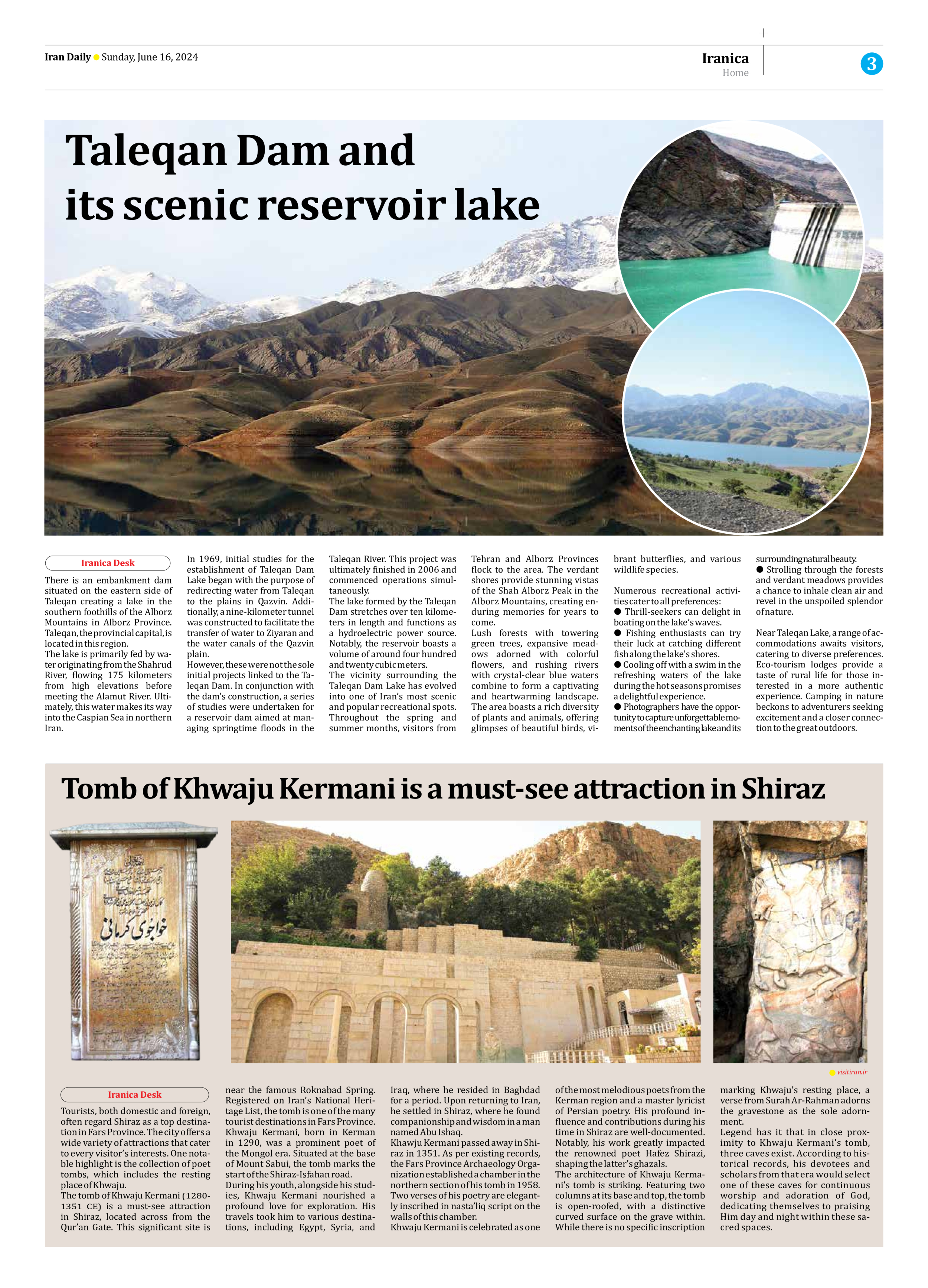
Tomb of Khwaju Kermani is a must-see attraction in Shiraz
Tourists, both domestic and foreign, often regard Shiraz as a top destination in Fars Province. The city offers a wide variety of attractions that cater to every visitor’s interests. One notable highlight is the collection of poet tombs, which includes the resting place of Khwaju.
The tomb of Khwaju Kermani (1280-1351 CE) is a must-see attraction in Shiraz, located across from the Qur’an Gate. This significant site is near the famous Roknabad Spring. Registered on Iran’s National Heritage List, the tomb is one of the many tourist destinations in Fars Province. Khwaju Kermani, born in Kerman in 1290, was a prominent poet of the Mongol era. Situated at the base of Mount Sabui, the tomb marks the start of the Shiraz-Isfahan road.
During his youth, alongside his studies, Khwaju Kermani nourished a profound love for exploration. His travels took him to various destinations, including Egypt, Syria, and Iraq, where he resided in Baghdad for a period. Upon returning to Iran, he settled in Shiraz, where he found companionship and wisdom in a man named Abu Ishaq.
Khawju Kermani passed away in Shiraz in 1351. As per existing records, the Fars Province Archaeology Organization established a chamber in the northern section of his tomb in 1958. Two verses of his poetry are elegantly inscribed in nasta’liq script on the walls of this chamber.
Khwaju Kermani is celebrated as one of the most melodious poets from the Kerman region and a master lyricist of Persian poetry. His profound influence and contributions during his time in Shiraz are well-documented. Notably, his work greatly impacted the renowned poet Hafez Shirazi, shaping the latter’s ghazals.
The architecture of Khwaju Kermani’s tomb is striking. Featuring two columns at its base and top, the tomb is open-roofed, with a distinctive curved surface on the grave within. While there is no specific inscription marking Khwaju’s resting place, a verse from Surah Ar-Rahman adorns the gravestone as the sole adornment.
Legend has it that in close proximity to Khwaju Kermani’s tomb, three caves exist. According to historical records, his devotees and scholars from that era would select one of these caves for continuous worship and adoration of God, dedicating themselves to praising Him day and night within these sacred spaces.







